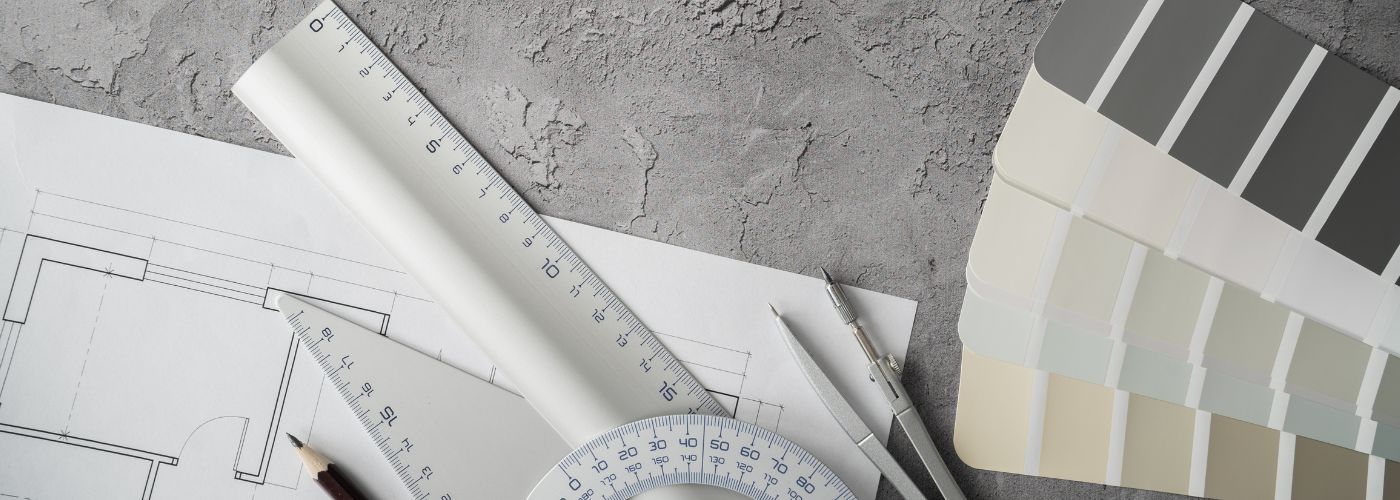For beginners, the world of interior design can seem daunting. However, understanding the fundamentals of space planning is key to transforming any area into an inviting sanctuary. In this article, we’ll be going over space planning tips for beginners. Let’s dive in and unlock the potential hidden within your walls!
Space Planning Tips For All Home Sizes
Effective space planning is crucial for creating an inviting and functional home, regardless of its size. Begin by envisioning how you move through your living space—consider high-traffic zones and quieter corners.
This mental map allows you to allocate areas wisely, ensuring that they serve their intended purpose without disruptiveness. For smaller homes, multifunctional spaces can breathe life into cramped quarters; think about using a nook as a reading corner that also doubles as storage for books and games.
In larger homes, it’s easy to fall into the trap of isolation between rooms. Break down this barrier with open sight lines or strategic placement of mirrors to create an illusion of spaciousness while enhancing connectivity among different areas.
Don’t shy away from blending uses—perhaps turn a large dining room into an informal meeting hub for family activities or hobbies when not entertaining guests.
Use Multi-Functional Furniture Pieces
Optimizing space in your home, no matter the size, can dramatically transform its functionality and aesthetic appeal. One of the most effective strategies is incorporating multi-functional furniture pieces into your design. This is one of the best space planning tips you can do for your home or garage conversion project.

Think beyond traditional options; items like nesting tables and convertible sofas are great, but consider integrating benches with storage or ottomans that double as seating and a coffee table. This not only helps minimize clutter but also provides innovative solutions to everyday challenges.
Moreover, take advantage of vertical space by using tall shelving units adorned with both decor and practical items—this draws the eye upward and creates an illusion of larger dimensions. In smaller homes, making use of underutilized areas such as corners or entryways for small-scale multi-functional installations can work wonders.
Even in larger spaces, strategically placed furniture that encourages movement while serving various purposes fosters a sense of openness without compromising style. Balancing aesthetics with functionality cultivates a harmonious living environment where every square inch counts!
Plan For Easy Accessibility Everywhere
When it comes to space planning tips, one of the most transformative principles is ensuring easy accessibility everywhere in your home. This involves not only physical navigation but also visual flow and energy within a room.
Think about creating distinct zones with thoughtful layouts that encourage fluid movement between areas. You might use rugs to define spaces or low-profile furniture pairings to keep sight lines open, enhancing airiness while maintaining purpose.
Adding strategically placed pathways through seating arrangements fosters interaction while emphasizing accessibility. Whether you’re in a cozy apartment or an expansive house, clarity and ease of access enhance your everyday experience, making every corner feel inviting rather than overwhelming.
Embrace these insights to create environments that invite connection and foster comfort!
Consider Decorative Artwork For Walls
When it comes to efficient space planning, consider zoning your spaces with decorative artwork for walls to define different areas and create visual interest. Strategic placement of art pieces can draw attention to specific zones. Consider this during the material selection process.

Remember that lighting plays an equally crucial role; using soft accent lights can highlight your artwork while adding warmth and depth to any space. By blending functionality with style, you’ll craft environments that are both livable and visually stunning, regardless of size.
Additionally, it’s essential to consider the scale and proportion of your artwork in relation to furniture and room dimensions. Larger pieces can serve as focal points in expansive areas, while smaller works may enhance intimacy in cozier nooks. Consider creating a gallery wall with an eclectic mix of sizes and frames to add character without overwhelming the space.
This is one of the best space planning tips when it comes to artwork.
Assign Each Living Space A Function
Considering all space planning tips is crucial for maximizing the efficiency and aesthetics of your home, regardless of its size. One effective approach is to assign each living space a clear function.
By defining areas as dedicated zones—such as a cozy reading nook, a vibrant play area, or a serene workspace—you can help prevent clutter from taking over and ensure that every square foot serves its purpose. This strategy not only enhances organization but also allows you to create an ambiance tailored to specific activities.
Having designated zones encourages mindful use of space, helping to maintain a sense of order and harmony throughout your home. Moreover, this intentional layout can promote better flow between different areas.
Use Colors For Eye-Catching Designs
When going over space planning tips, understanding how to effectively use colors can dramatically alter the perception of any room, regardless of size. Lighter tones, such as soft pastels or crisp whites, can create an illusion of spaciousness by reflecting light and brightening up corners that often feel cramped.
Conversely, bold hues like deep blues or rich greens can define areas within open spaces, creating intimate zones for different activities without the need for physical barriers. By strategically placing darker colors on accent walls or furniture pieces, you draw attention and add depth to your design.
In smaller apartment interior design where every square inch counts, consider multifunctional furnishings that embrace both aesthetics and utility. A vibrant ottoman can serve dual purposes—seating and storage—while also injecting a splash of color into your decor scheme.

How to Love Your Home Again
Sometimes we can feel uninspired and tiresome with the home we once loved so dearly.
Jan
Affordable Ways to Glamorize Your Home
There are many affordable ways to glamorize your home; elka Interiors & Construction is here
Jan
How to Stage Your Bathroom to Add Appeal
Home staging is a great way to incorporate an added sense of luxury and increase
Jan